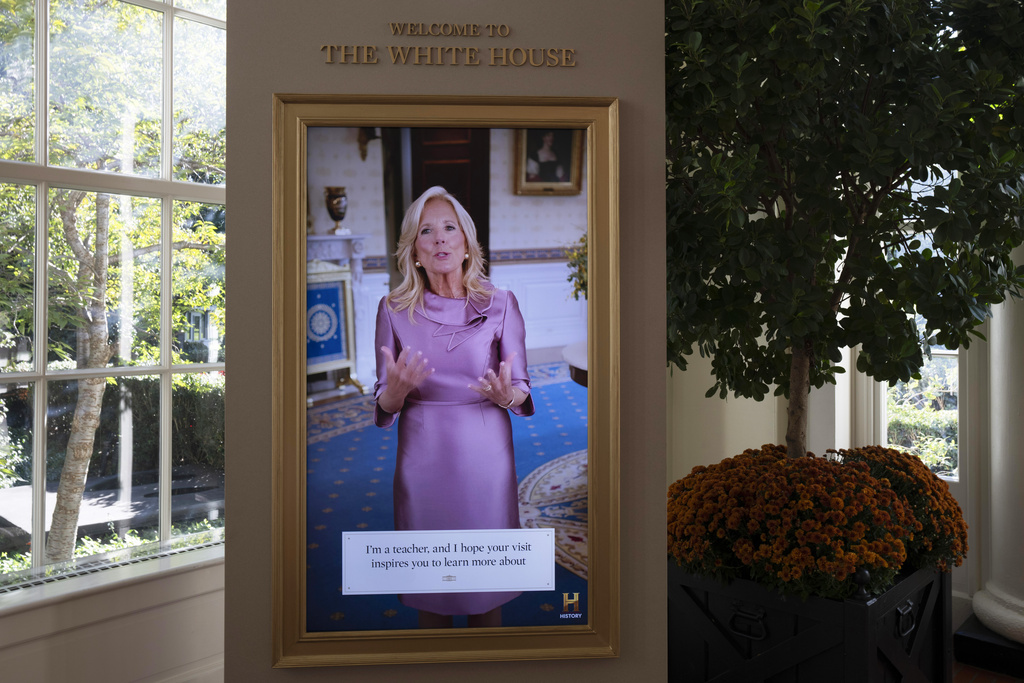WASHINGTON — Jill Biden trained her educator’s eye on the White House public tour and on Monday is unveiling an updated version she helped design to teach visitors more about the mansion’s history and events that unfolded in some of its famous rooms.
[time-brightcove not-tgx=”true”]
A new stop on the tour is the Diplomatic Reception Room, previously off-limits. This ground-floor room is where President Franklin D. Roosevelt recorded his “fireside chats.” Snippets of some of those conversations will now play for visitors.
Visitors will also be able to go into several other ground floor rooms that previously were cordoned off at the doorway: the library; the China Room, which houses the collection of presidential place settings; and the Vermeil Room, which houses a collection of tableware.
The same goes for the East Room and State Dining Room one floor above.
Visitors can also play around with new digital displays that replace printed signs outside of rooms on the tour and offer an experience that engages multiple senses.
“Education is my life’s work and I know that there are three kinds of learners: visual, auditory and tactile,” Jill Biden, a teacher for 40 years, said Sunday night as she and President Joe Biden hosted a dinner to celebrate the updated tour.
After walking the tour route herself, the first lady decided she wanted to expand it and add more educational and historical content, according to aides. It had been decades since the tour was last updated.
“The White House tour now lets visitors touch, hear and see their history up close,” she said Sunday.
Some 10,000 people tour the White House every week.
Read More: Is the White House a ‘Dump’? It Used to Be
When they enter through the East Wing, Jill Biden will be there on video to welcome them, while President Biden will be on video in the East Room to tell about some of the history that happened there. The next president, who takes office in January, and his — or her — spouse can record their own greetings since the changes are meant to carry over from one administration to the next.
Collages of printed photos that line the hallway are now digital, making it easier to change them around, while a new vertical 3D model of the 18-acre White House campus explains how the executive mansion was built and expanded over the past 200-plus years.
The first lady’s office has worked on the project for the past two years with the National Park Service, the White House Curator’s office, the private, nonprofit White House Historical Association, presidential libraries and the History Channel.

